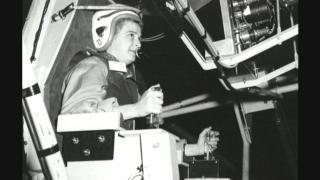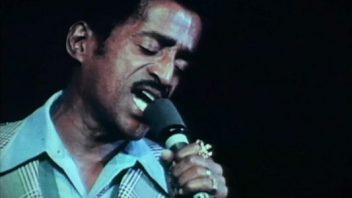I didn’t see as many documentaries this year as I would have liked, but of those I did, these were the five best…

#1) “Three Identical Strangers.” My favorite documentary of 2018 is the story of triplets born in New York in 1961 who were separated when they were six months old and adopted by a blue collar family, a middle class family, and a well-to-do family — none of whom knew that the boys came from an identical set of three. The guys didn’t find out until they were 19. That’s a hell of an intriguing plot, but documentarian Tim Wardle goes beyond that part of the story to delve into the mystery of how the whole thing began. By the end, he’s talked to the brothers, their wives, their parents, and a variety of other people who crossed their paths. In doing so, he takes the viewer through a roller coaster of emotions that I don’t want to spoil, so I won’t tell you any more, other than to say you’ve got to see this story. Even then, you’ll have lots of questions the subjects themselves can’t answer.

#2) “Bathtubs Over Broadway.” Steve Young spent a lot of time in old record stores searching for long-lost vinyl and came across albums of productions he’d never heard of. It turned out that they were promotional recordings of industrial musicals that had been written and performed specifically for conventions and sales gatherings of large corporations (Ford, John Deere, McDonald’s, American Standard). As Steve found more of these, he became curious about the people who had created them. Thus began a new obsession. He discovered that quite a few of these productions — hundreds were mounted from the 1950s through the mid-1980s — had some familiar names in the credits. Performers like Martin Short, Florence Henderson, and Chita Rivera. Composers who were known for massive Broadway hits, like Sheldon Harnick/Jerry Bock (“Fiddler On The Roof”) and John Kander/Fred Ebb (“Cabaret” and “Chicago”). Directors and choreographers like five-time Tony winner Susan Stroman. There were also lots of people whose names Steve didn’t recognize, but he not only got to know their work, he eventually tracked down several who were still around.

#3) “Seeing Allred.” A biography of the crusading attorney Gloria Allred, who has fought cases over women’s rights, employment discrimination, and sexual harassment. Allred has been viewed by some of her detractors as a grandstander who loves publicity, yet the documentary shows how effectively she has worked for her clients, how she gets deeply involved with their causes, and how her personal life has affected her career. It also reminded me of a conversation I had with Allred in 2006 in which we covered some of the same ground (you can listen to that audio here).

#4) “Mercury 13.” When the movie “Hidden Figures” came out a year and a half ago, I wrote about how much I enjoyed it, but how upset I was that we’d never been taught an important piece of NASA history — the role of African-American women in getting us into space. Now I’m even more upset after watching the Netflix documentary, “Mercury 13,” about the female pilots who were given many of the same tests as the men who were chosen to be our first astronauts, but were never allowed to prove their abilities and thus earn a place in our space-going history. While they were not allowed to play even a behind-the-scenes role in NASA’s preparations to put humans into orbit, their story should be better known. Now it can be, thanks to directors David Sington and Heather Walsh.

#5) “Sammy Davis Jr.: I’ve Gotta Be Me.” The documentary touches on almost every aspect of Sammy’s 60-year career. It includes interviews with lots of Sammy’s contemporaries, as well as his biographers and others who knew him behind the scenes. There are also lots of clips of Davis appearing on TV talk shows discussing very openly the issues he’d faced, including the fact that because he started working onstage so young, he never attended a day of school in his entire life. Director Sam Pollard doesn’t avoid the tougher aspects of Sammy’s biography: that famous embrace of Richard Nixon in 1972; his being shunned by other black people; the uproar that accompanied his marriage to the white, Norwegian actress May Britt; how he and co-star Paula Wayne dealt with the backlash of being the first to pucker up for an interracial kiss on Broadway during the run of “Golden Boy.” But “I’ve Gotta Be Me” also includes a lot of footage of Davis doing what he did best: singing, dancing, impressions, and acting. It also delves into his support of Dr. Martin Luther King and the civil rights movement, his money problems, and how the Sammy Davis/Archie Bunker kiss on “All In The Family” in 1972 was very much Sammy’s idea.
